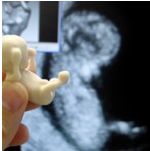
It makes one wonder it does.
Carolina Naturally is read in 191 countries around the world daily.
Today is Talk Like Shakespeare Day
Don't forget to visit our sister blog!

| 1348 | The first English order of knighthood is founded. | |
| 1500 | Pedro Cabal claims Brazil for Portugal. | |
| 1521 | The Comuneros are crushed by royalist troops in Spain. | |
| 1661 | Charles II is formally crowned king, returning the monarchy to Britain, albeit with greatly reduced powers. | |
| 1759 | British forces seize Basse-Terre and Guadeloupe from France. | |
| 1789 | President George Washington moves into Franklin House, New York. | |
| 1826 | Missolonghi falls to Egyptian forces. | |
| 1856 | Free Stater J.N. Mace in Westport, Kansas shoots pro-slavery sheriff Samuel Jones in the back. | |
| 1865 | Union cavalry units continue to skirmish with Confederate forces in Henderson, North Carolina and Munsford Station, Alalbama. | |
| 1895 | Russia, France, and Germany force Japan to return the Liaodong peninsula to China. | |
| 1896 | Motion pictures premiere in New York City. | |
| 1915 | The ACA becomes the National Advisory Council on Aeronautics (NACA), the forerunner of NASA. | |
| 1920 | The Turkish Grand National Assembly has first meeting in Ankara. | |
| 1924 | The U.S. Senate passes the Soldiers' Bonus Bill. | |
| 1945 | The Soviet Army fights its way into Berlin. | |
| 1950 | Chiang Kai-shek evacuates Hainan, leaving mainland China to Mao Zedong and the communists. | |
| 1954 | The Army-McCarthy hearings begin. | |
| 1966 | President Lyndon Johnson publicly appeals for more nations to come to the aid of South Vietnam. | |
| 1969 | Sirhan Sirhan is sentenced to death for killing Senator Robert Kennedy. | |
| 1971 | The Soviet Union launches Soyuz 10, becoming the first in Salyut 1 space station. |



This month a Koch representative contacted Eddy W. Hartenstein, publisher and chief executive of The Los Angeles Times, to discuss a bid, according to a person briefed on the conversation who spoke on the condition of anonymity because the conversation was private. Mr. Hartenstein declined to comment.
One person who has previously advised Koch Industries said the Tribune Company papers were considered an investment opportunity, and were viewed as entirely separate from Charles and David Kochs' lifelong mission to shrink the size of government.
 It could mean exposing businesses
to Internal Revenue Service penalties and leaving low-income citizens
unable to afford coverage even as legal immigrants get financial aid for
their premiums. For the poorest people, it could virtually guarantee
that they will remain uninsured and dependent on the emergency room at
local hospitals that already face federal cutbacks.
It could mean exposing businesses
to Internal Revenue Service penalties and leaving low-income citizens
unable to afford coverage even as legal immigrants get financial aid for
their premiums. For the poorest people, it could virtually guarantee
that they will remain uninsured and dependent on the emergency room at
local hospitals that already face federal cutbacks. How's
this for a great use for emerging technology? Combine a sonogram that
gives a 3D rendering of a fetus with 3D printing, and you produce a
plastic model of the baby months before birth. This goes a long way
toward allowing the vision-impaired to feel the shape and size of the
baby, whether it's the mother or other family members. Industrial
designer Jorge Roberto Lopes dos Santos is putting that technology to
work.
How's
this for a great use for emerging technology? Combine a sonogram that
gives a 3D rendering of a fetus with 3D printing, and you produce a
plastic model of the baby months before birth. This goes a long way
toward allowing the vision-impaired to feel the shape and size of the
baby, whether it's the mother or other family members. Industrial
designer Jorge Roberto Lopes dos Santos is putting that technology to
work.His company Tecnologia Humana 3D has been developing new ways to build three-dimensional computer models using data from sonograms and other imaging techniques after initially setting out to enhance prenatal diagnostic tools.So of course the technology will also be available to those who don't need it but can afford it. Soon, when you ask an expectant father how his wife is doing, and he may pull out a tiny plastic fetus instead of the currently used sonogram printout. More
The work took a new direction when dos Santos realized that printing these models would give visually impaired mothers-to-be a chance to meet their babies in utero.
“We work mainly to help physicians when there is some eventual possibility of malformation,” dos Santos said. “We also work for parents who want to have the models of their fetuses in 3D.”
Tecnologia Humana designs the models with sophisticated programs that produce highly detailed simulations of a fetus’ anatomy that doctors can examine virtually.
 The number of poison control center calls about teens doing the prank "has increased dramatically," from 51 in 2011 to 222 last year, according to the American Association of Poison Control Centers.
The number of poison control center calls about teens doing the prank "has increased dramatically," from 51 in 2011 to 222 last year, according to the American Association of Poison Control Centers.



 According
to John Markoff in his 2005 book What
the Dormouse Said: How the Sixties Counterculture Shaped the Personal
Computer Industry
According
to John Markoff in his 2005 book What
the Dormouse Said: How the Sixties Counterculture Shaped the Personal
Computer IndustryIn 1971 or 1972, Stanford students using Arpanet accounts at Stanford University's Artificial Intelligence Laboratory engaged in a commercial transaction with their counterparts at Massachusetts Institute of Technology. Before Amazon, before eBay, the seminal act of e-commerce was a drug deal. The students used the network to quietly arrange the sale of an undetermined amount of marijuana.Mike Power of The Guardian has more: Here.
 Who's
on first?The wackiest night in baseball since the Abbot and Costello skit occurred
Friday night during the Brewers-Cubs game, where Jean Segura tried to
stole third but ended up stealing first base!
Who's
on first?The wackiest night in baseball since the Abbot and Costello skit occurred
Friday night during the Brewers-Cubs game, where Jean Segura tried to
stole third but ended up stealing first base!I think we just found baseball's version of Leon Lett.More | Here's the play in question over at MLB.com
I'm talking about Brewers shortstop Jean Segura, who, like the mixed-up grandma who made a U-turn on a one-way street, performed an act of baserunning madness Friday that he'll be seeing, on scoreboard video-screen blooper reels, for the rest of his life.
To even try to describe this adventure is almost as challenging as actually doing it. And all the jumbled online play-by-play accounts out there are living proof.
But here's the simplest way to sum it up:
This guy stole second. Then he tried to steal third but somehow wound up on first. Then he got thrown out trying to steal second again. All in a span of five pitches.






